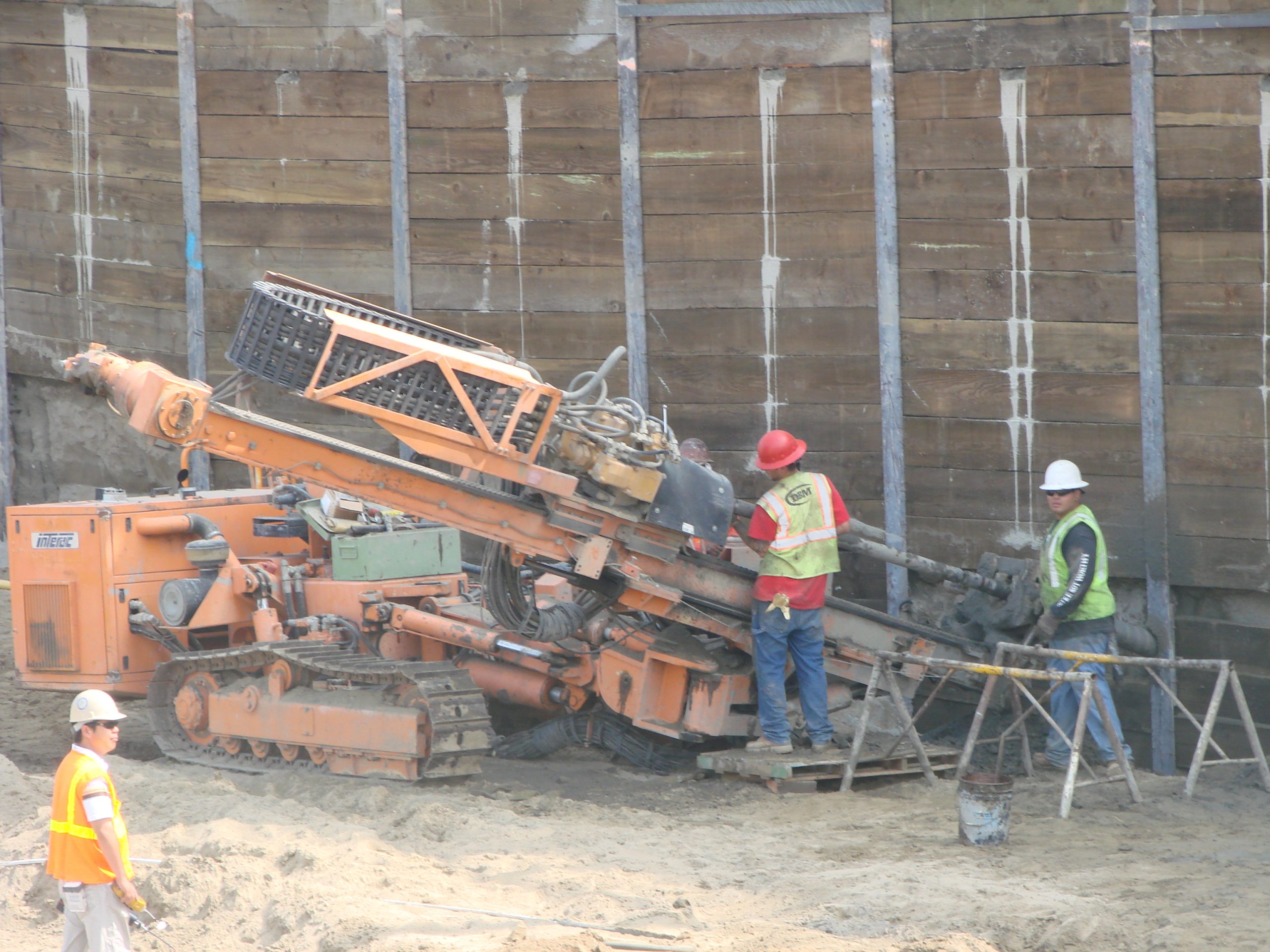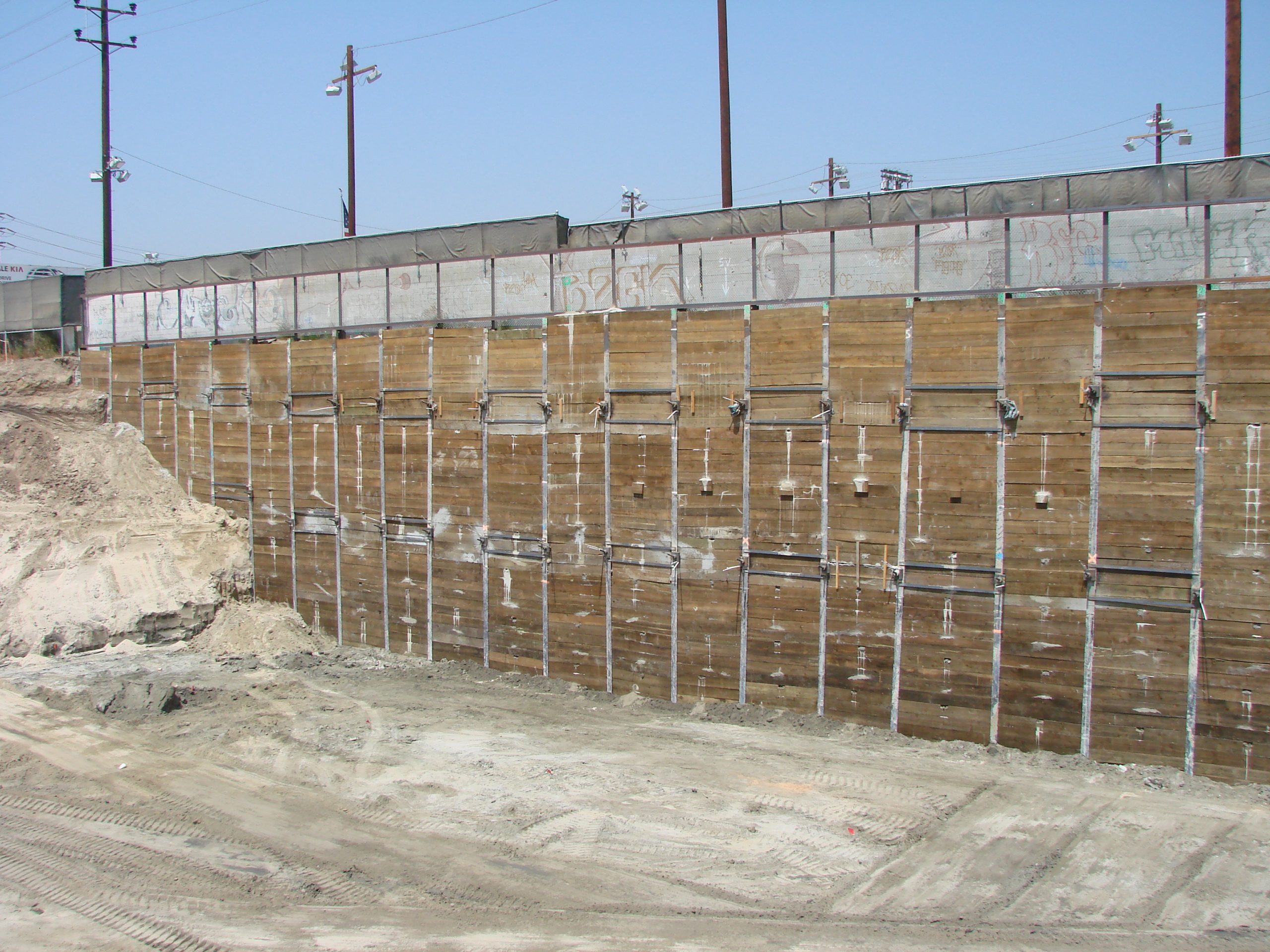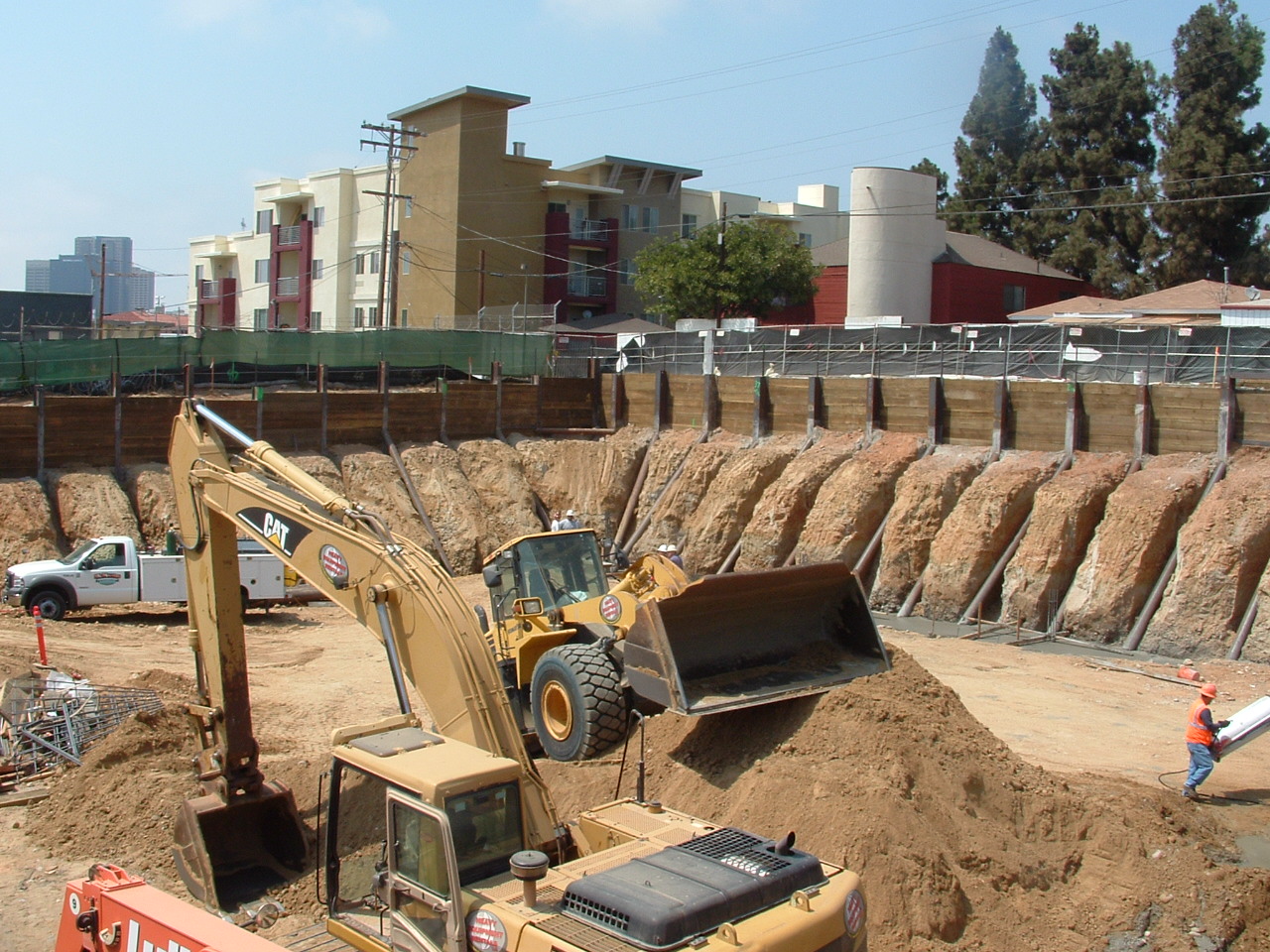


Beam and Lagging, also known as soldier pile and lagging walls, is a widely used earth retention system designed to stabilize soil during excavation and construction projects. This method combines vertical steel piles (commonly H-piles) with horizontal lagging materials to create a strong and flexible retaining wall.
How Beam and Lagging Works
Steel H-piles are drilled or driven at consistent intervals along the excavation perimeter. As soil is removed, lagging—typically wood, steel panels, or precast concrete—is placed between the piles. This lagging resists the lateral pressure of the retained soil and transfers the load safely into the piles.
Applications of Soldier Pile and Lagging Systems
Beam and lagging is highly versatile and is commonly used for:
- Deep excavations in urban areas
- Temporary or permanent retaining walls
- Basement and foundation construction
- Roadway and bridge support
- Shoring for utility installations
Design Options and Support
Depending on the project requirements, soldier pile and lagging walls can be installed as cantilever systems or reinforced with tiebacks, soil anchors, or internal bracing for additional stability. This flexibility makes beam and lagging an effective solution in a wide range of soil conditions and construction environments.
Advantages of Beam and Lagging
- Cost-effective and efficient installation
- Adaptable to different site conditions
- Suitable for both temporary and permanent applications
- Minimal disturbance to surrounding structures
- Proven performance in construction projects across Southern California and beyond
Quotes

Fast, Competitive,
Tailored to You.
